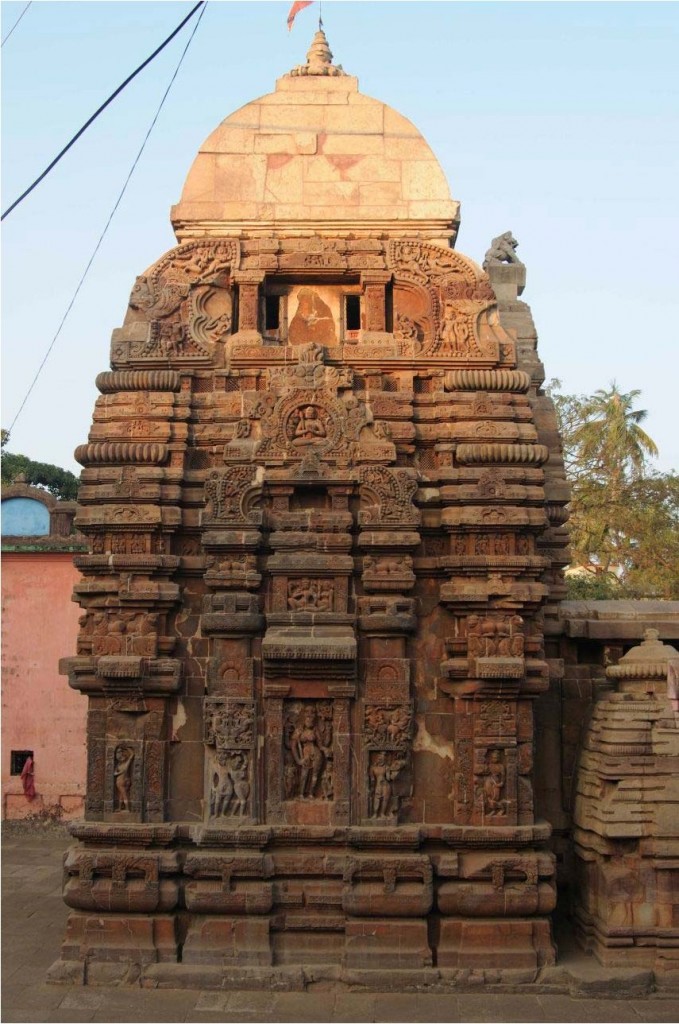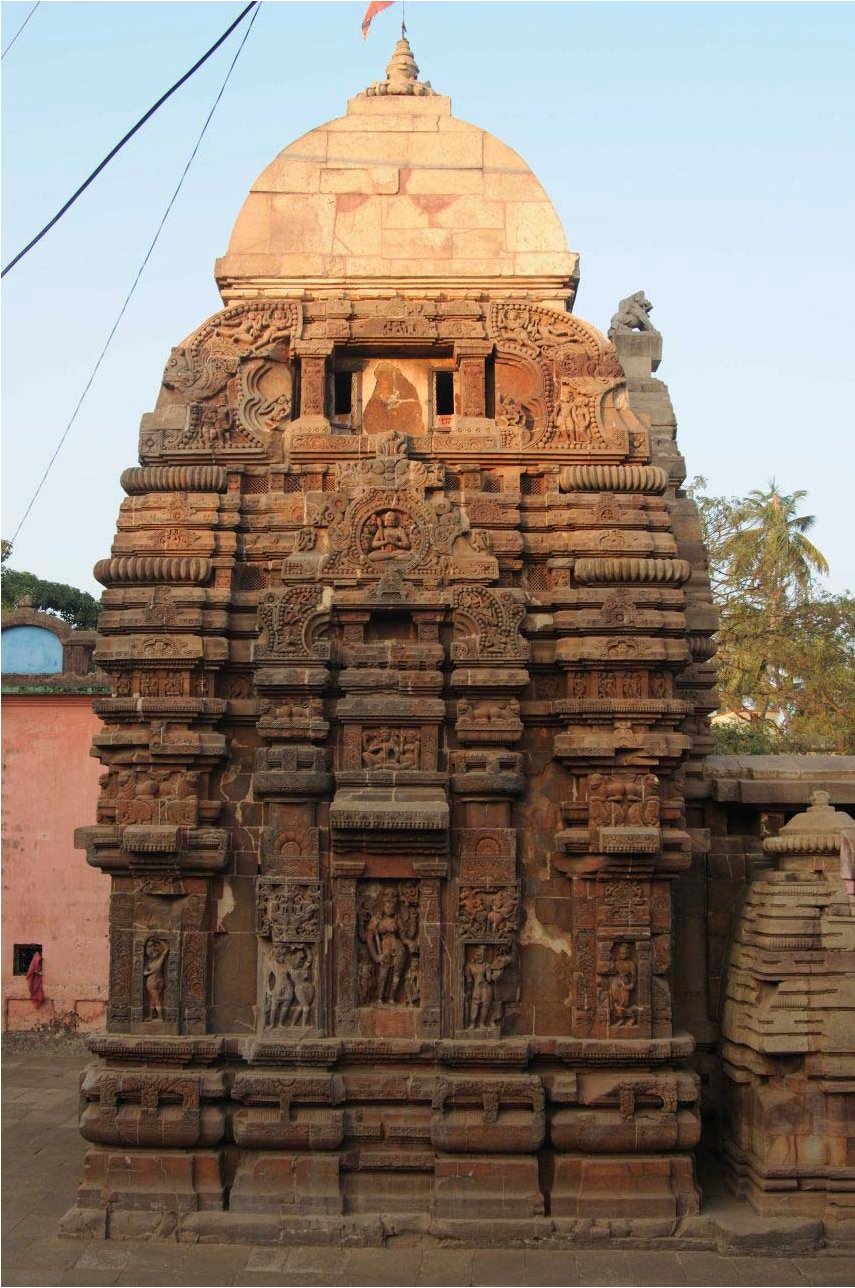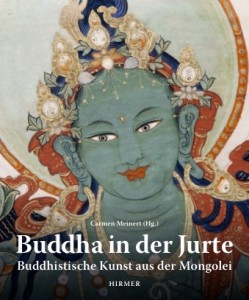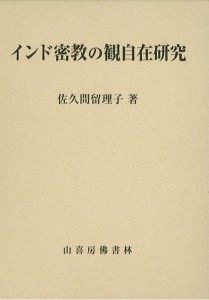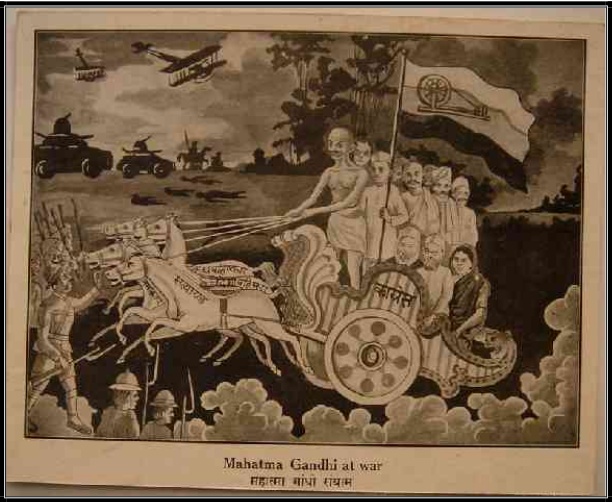Valerio-Baumann, Sabine. ‘Die Bedeutung weiblicher Gottheiten im ikonographischen Programm des Vaitāl Deul. Eine Kritische Analyse unter Berücksichtigung der Devī-Darstellungen von Śakti-Tempeln in Orissa.’ Diplomarbeit (Magistra der Philosophie), Universität Wien. 2011. 140 pp. [official site/PDF]
From the Abstract
This thesis focuses on the significance of the female goddesses in the iconographic program of one of the most important Śakti-temple in Orissa – the Vaitāl Deul. This monument is situated in the city of Bhubaneśvar and was built during the reign of the Bhauma-Karas-dynasty. […] While a large number of devīs can be found on the temple walls and inside the sanctum, male figures are rare but situated on important positions of the building, e.g. in the caitya-medallions of the gaṇḍi or inside the shrine. Part of this thesis focuses on the sociohistorical and religious background of the Vaitāl Deul. By means of a comparative analysis, I studied the relation of the iconographic program of the Vaitāl Deul both with Sanskrit-śilpa-manuscrip[t]s (Śilpa-Prakāśa and Śilparatnakośa) and with the iconographic programs of other, representative Śakti-temples of Orissa. These analyses have shown that every Śakti-Temple has its own independent iconographic program. […]
(Fortunately, this Orissan masterpiece is still standing. It helps to be on the right side of history in Hindustan — not like these guys.)
